
You Buy the Book… But It’s Never Read
You buy your child a new book. Maybe it’s something they showed interest in, or one you loved as a kid. At first, they’re excited. But days later, it’s sitting untouched on the shelf.
Not because they’re lazy. Not because they lost interest.
Often, the real problem is something most parents overlook: a mismatch in reading level.
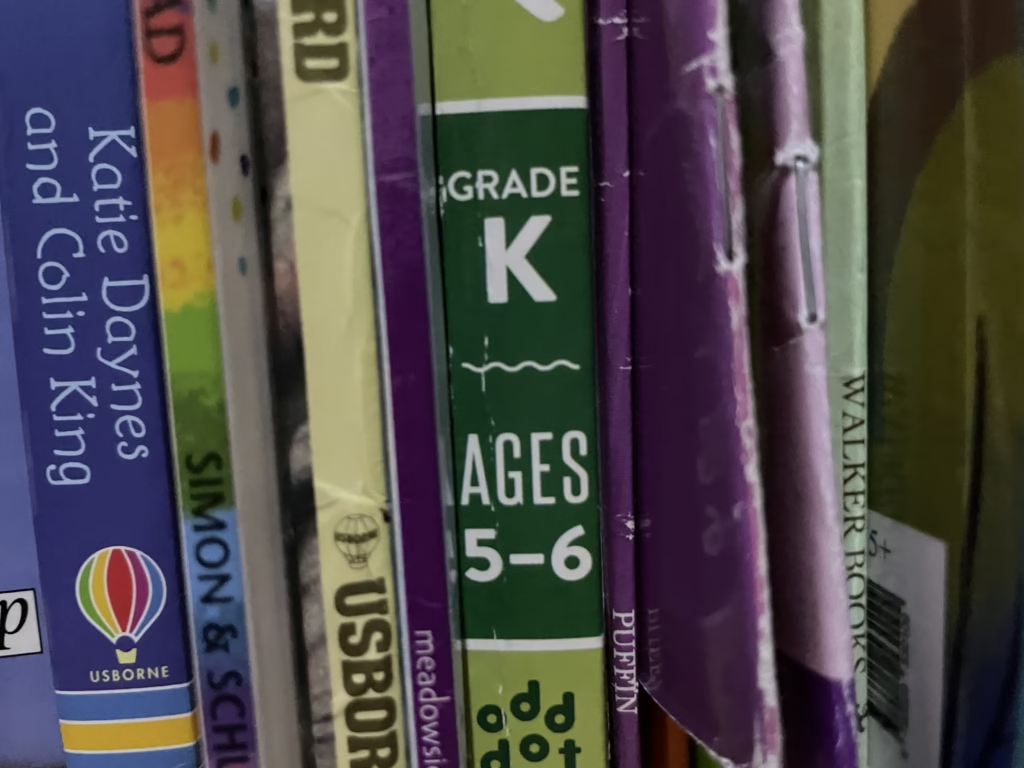
I’ve seen this over and over, both as a parent and a teacher. But with the right tools and a little guidance, you can change that.
Once you understand how it works, you’ll be able to pick books that feel like a perfect fit, every time!
Because one mismatched book isn’t a big deal. But several in a row? That’s how kids fall out of love with reading.
In this post, I’ll show you:
- What reading levels are (and why they’re confusing)
- How to check your child’s reading level, without needing a degree in education
- How to find books that match
- When to move your child up a level
Want to build a home environment that encourages regular reading? Here’s how to set up a reading-friendly home in 5 simple steps.
Before you can choose the right book, you need to understand the system behind them. So let’s start with the part most parents are never taught: what reading levels actually are.
- What Are Reading Levels, Really? (And Why They’re Confusing)
- Why Reading Levels Matter
- How to Check Reading Levels (3 Quick Methods)
- How to Check Reading Levels of Books
- When to Move to a New Reading Level
- Your Next Step: Get the 5 Finger Retell Pack
What Are Reading Levels, Really? (And Why They’re Confusing)
Reading level systems try to match a child with the right book. One that’s not too easy, not too hard, and interesting for your child’s age. But the systems themselves? Confusing.
That’s because reading levels can refer to text complexity, age interest, or overall reading ability. Different systems emphasise different things, and many are used side-by-side in schools, libraries, or bookstores.
Here’s a simplified cheat sheet:
| System | What It Measures | Where You’ll See It | Common In |
|---|---|---|---|
| Lexile | Text difficulty (200L–1600L) | School reports, online book databases | 🇺🇸 🇨🇦 🇦🇺 |
| AR (Accelerated Reader) | Grade-based readability + quiz system | AR programs at school | 🇺🇸 🇬🇧 🇦🇺 |
| Age Bands | Publisher’s suggested reader age | Book covers, libraries | 🌎 Global |
| Book Bands | Colour-coded phonics levels for early readers | UK primary schools, readers | 🇬🇧 🇦🇺 🇳🇿 |
| Guided Reading Levels | Lettered levels A–Z based on skill progression | Classroom reading groups | 🇺🇸 🇨🇦 🇬🇧 |
| CEFR | Overall language proficiency (A1–C2) | For second-language learners | 🇪🇺 Asia (international schools) |
👉 Tip: A book marked “Ages 8–10” might be age-appropriate in topic, but too easy or too difficult to read. Always check comprehension.
Would you like to print this Cheat Sheet off for your fridge? Get it here, just one click and it’s yours.
Why Reading Levels Matter
Books that don’t match your child’s reading level can lead to:
- Frustration and self-doubt if they’re too difficult
- Disinterest and boredom if they’re too easy
The right level builds momentum, confidence, and curiosity. Children feel proud when they finish a book that felt just challenging enough. You want the book to stretch them slightly, but still feel achievable.
My daughter recently wanted to read a chapter book after finishing kindergarten. She reached for something meant for teenagers. We scaled back, not because I didn’t believe in her, but because I wanted her to feel successful. We found a middle ground: short stories with chapters and pictures. She loved them.
Matching the book is important, but building a love of reading is just as crucial. These 5 benefits of reading will remind you why it’s worth the effort.
How to Check Reading Levels (3 Quick Methods)
1. Ask a Teacher
Teachers usually know what reading system your child is assessed on and can give you their current level. Even without the exact code, they’ll still know what suits your child.
2. Check Reading Levels With an Online Checker
Several websites offer free reading level tests:
- Oxford Owl: Gives a reading level, suggested book list, and activities.
- Sonlight: Basic, but accurate.
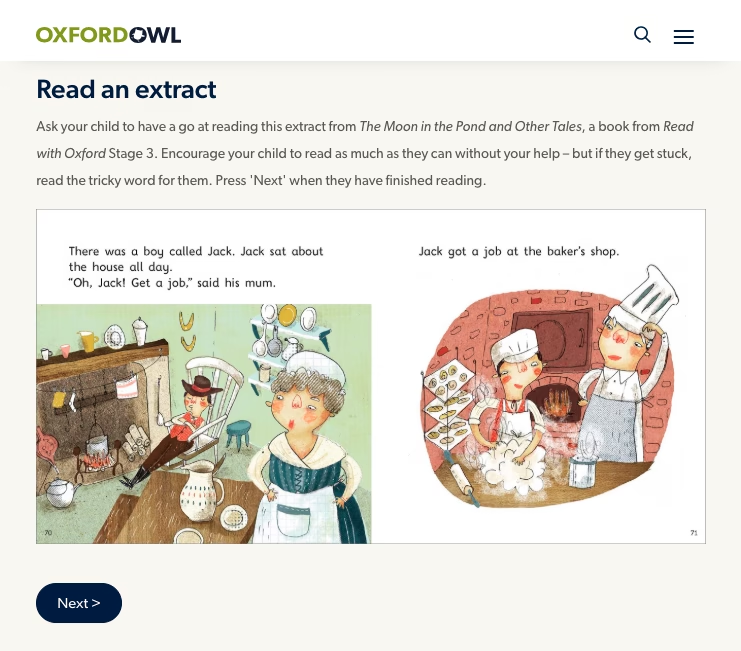
Once you have a level, use a reading level conversion chart (like the one I provide) to match it across different systems.
3. Check Reading Levels Yourself Using Comprehension Questions
You don’t need tech or teacher reports. Just read a book together and ask questions to see if your child understands what they’re reading.
Use the 5 Finger Retell, a simple tool to check comprehension by asking questions grouped by age. Ask your child these questions as you read and see if they are able to answer:
Ages 3-5
- Who was in the story?
- Where did it happen?
- What went wrong?
- What happened next?
- How did it end?
Ages 6–8
- Who were the main characters?
- What did they want?
- What was the biggest problem?
- Can you tell me 3 things that happened?
- How was the problem solved?
Ages 9–12
- Who changed the most?
- What was the turning point?
- Why did the character act that way?
- What’s the message or lesson?
- Why do you think the author wrote this?
If they struggle to answer, the book may be too difficult. If they breeze through, it might be too easy.
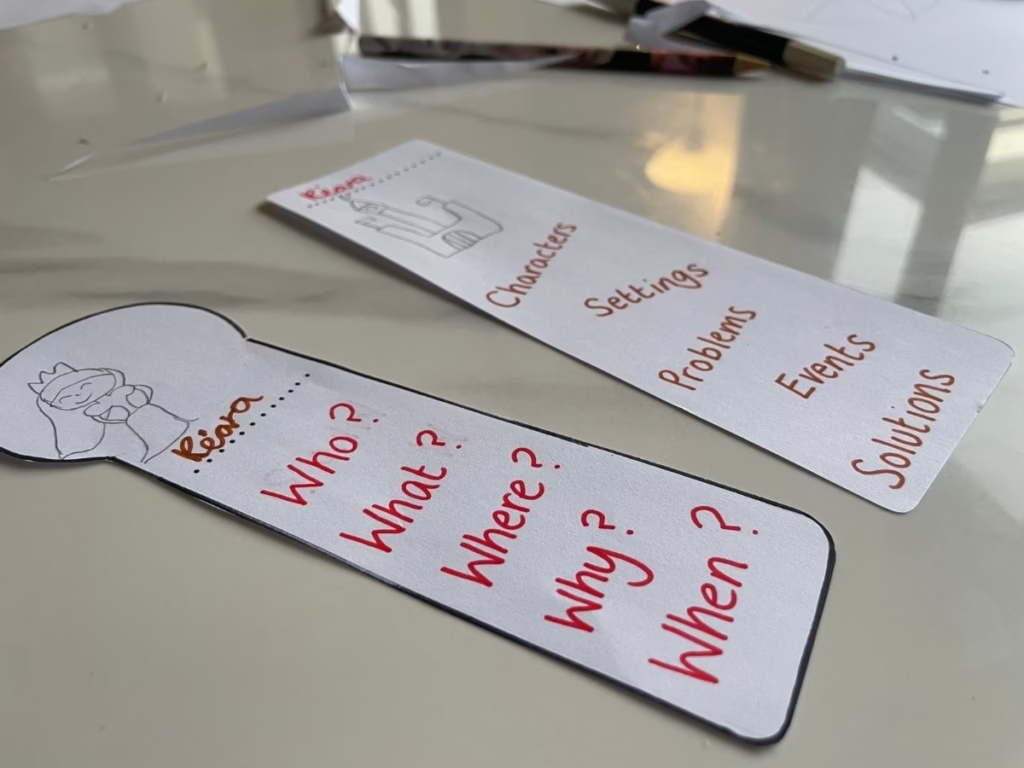
Download and print the 5 Finger Retell Activity Pack to get started!
How to Check Reading Levels of Books
Some books show their level somewhere on the back cover or publisher page. Look for:
- Lexile number (e.g., 780L)
- AR level (e.g., 4.6)
- Colour band or guided reading letter (e.g., Blue or Level M)
If the label is unfamiliar, use a conversion chart to see how it aligns with your child’s level. My Cheat Sheet will give you all the information you need.
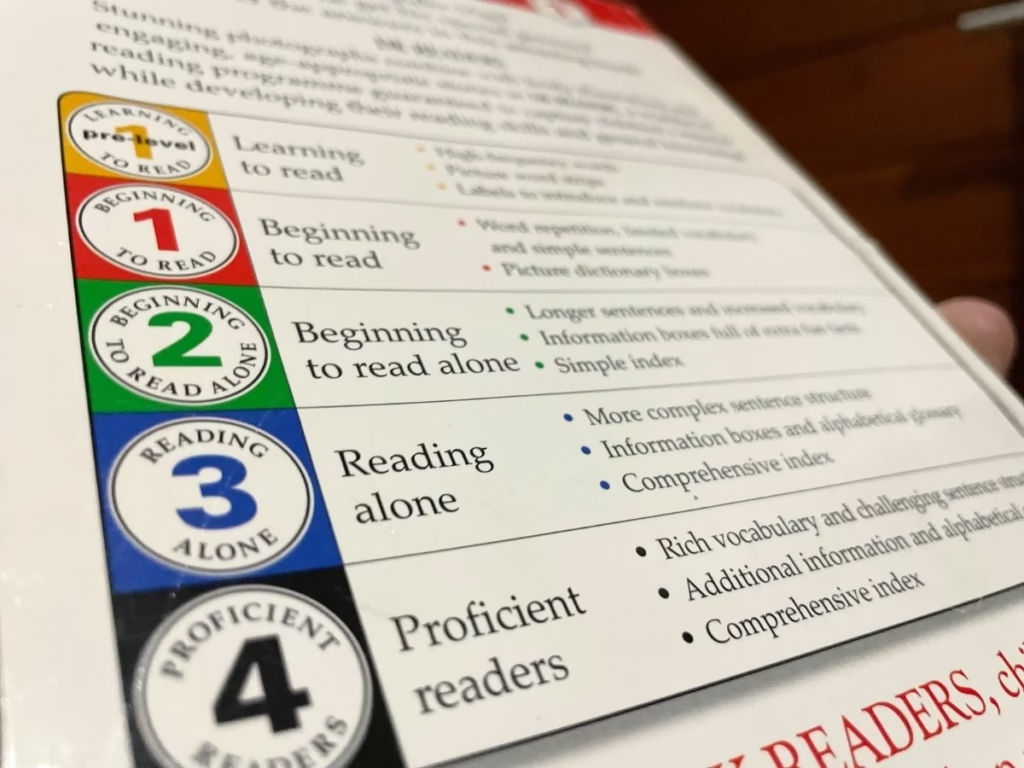
Helpful tools
When I checked my own children’s bookshelf, I noticed that only a few books actually showed the reading level on the cover. That’s totally normal. If it’s not printed, just type the title into one of the following websites to find out:
- Book Wizard: Multiple level systems (The most useful!)
- AR Book Finder: For Accelerated Reader levels
- Lexile Hub: For Lexile numbers
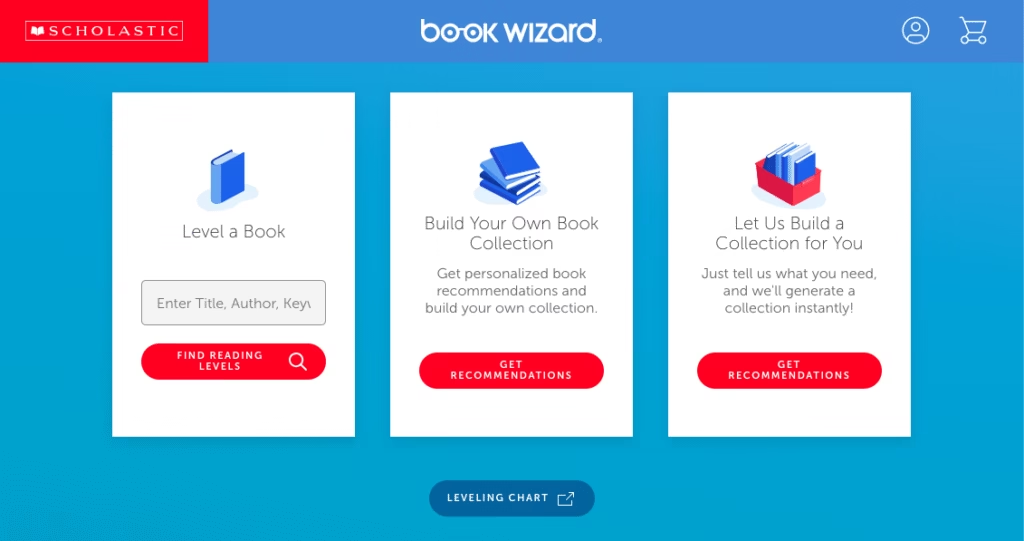

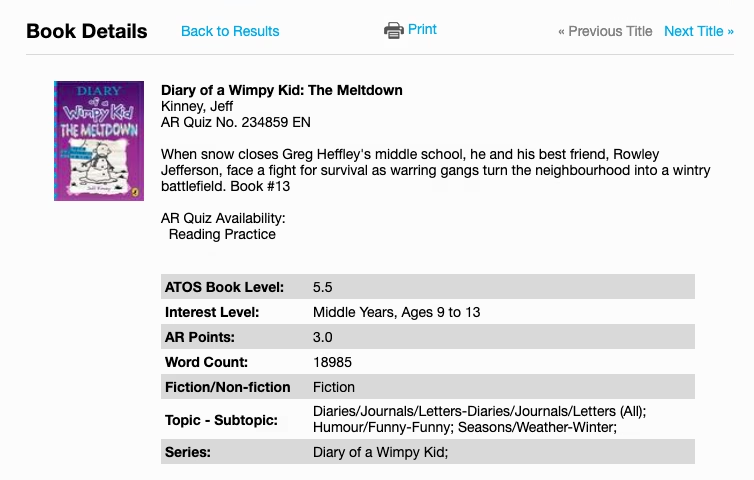
Just remember, don’t obsess over these numbers. The levels are a guide, not a rule.
When to Move to a New Reading Level
Your child’s reading progress isn’t as steady as growing taller. But here are a few signs your child may be ready to level up. Check if they:
- Finish books without asking for help
- Choose harder books on their own
- Understand and enjoy more complex ideas
That said, it’s okay to:
- Re-read books they love
- Mix easy and challenging reads
- Support them with trickier books
I check reading levels of my children level every 6 months. Nothing formal, just a shared reading moment with the 5 Finger Retell questions to see how she’s doing.
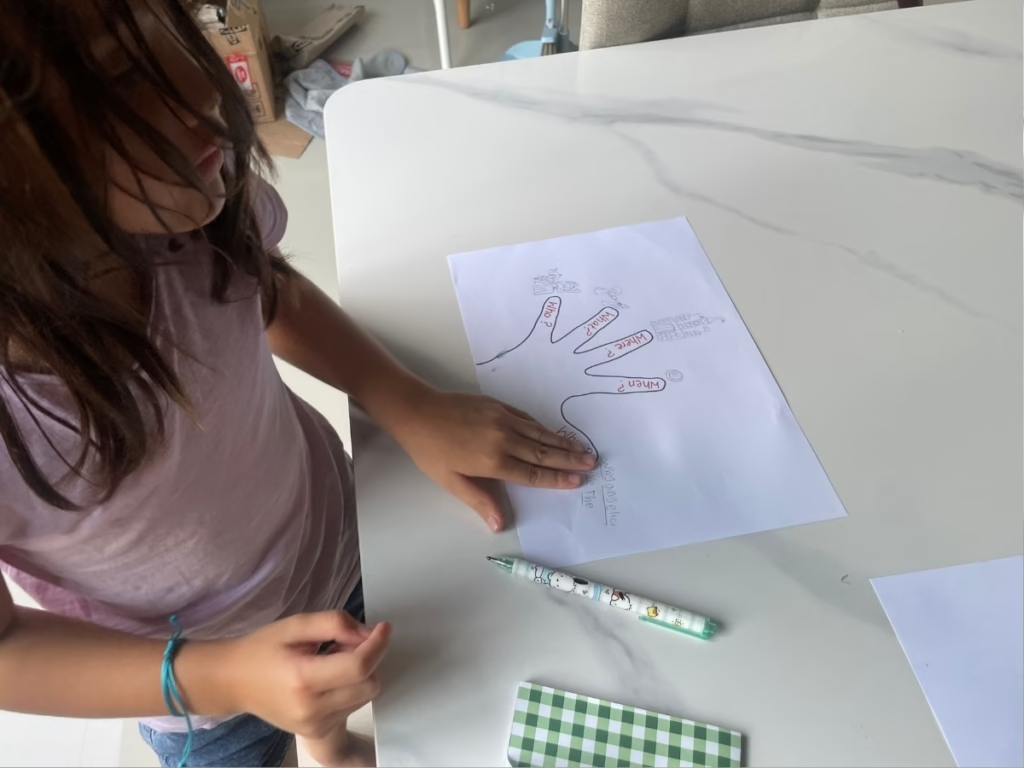
If you’re not sure how to support your child between levels, try these easy post-reading activities you can do at home. No classroom required.
Your Next Step: Get the 5 Finger Retell Pack
Taking an active role in your child’s reading builds trust and connection, and gives you practical ways to support their learning.
If you want to quickly see if your child is understanding what they read, download the 5 Finger Retell Activity Pack.
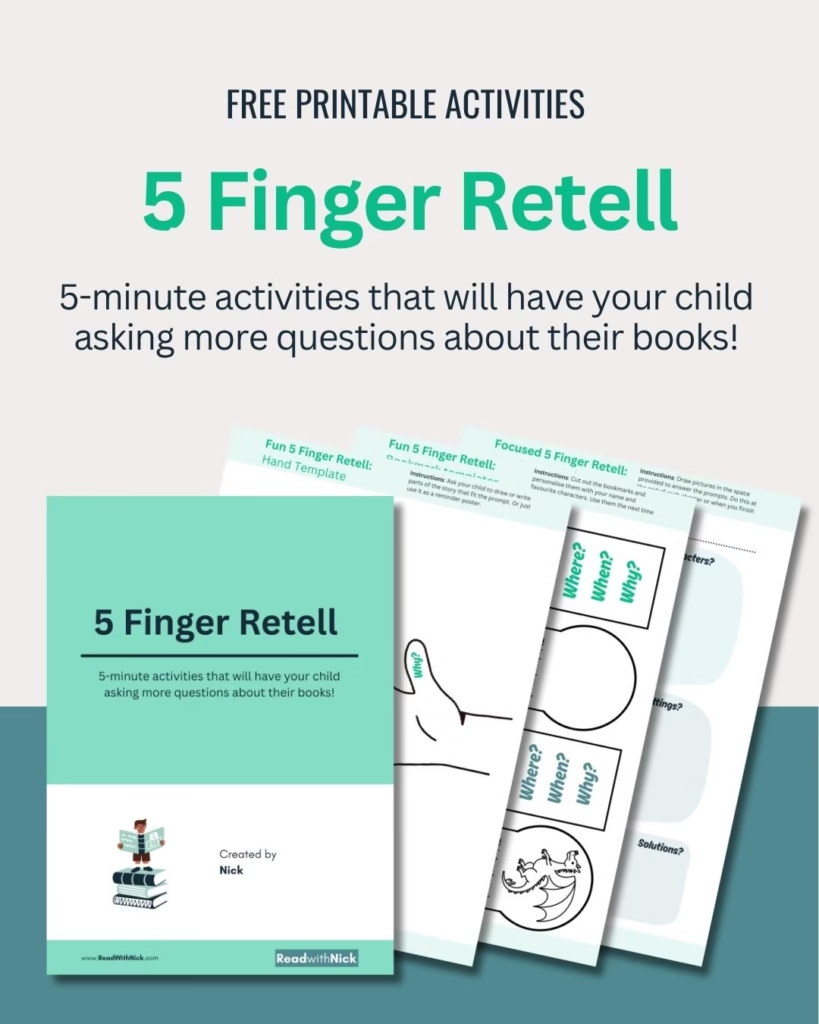
What’s inside:
- Customisable Bookmarks
- Comprehension Activity Sheets
- Simple Instructions
- Print-Friendly Format
PS: If you missed it earlier, you can still grab the Reading Level Comparison Cheat Sheet right here. It’s an instant download!
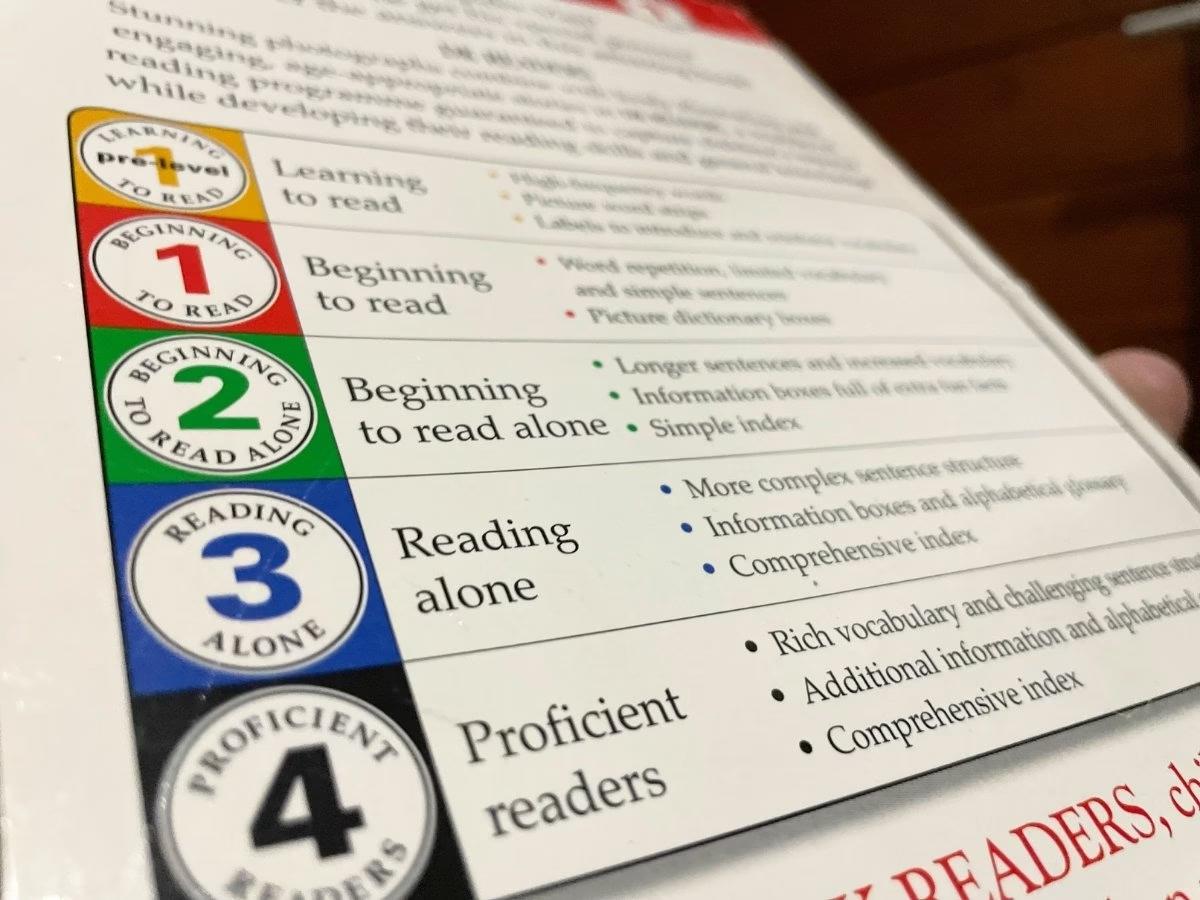
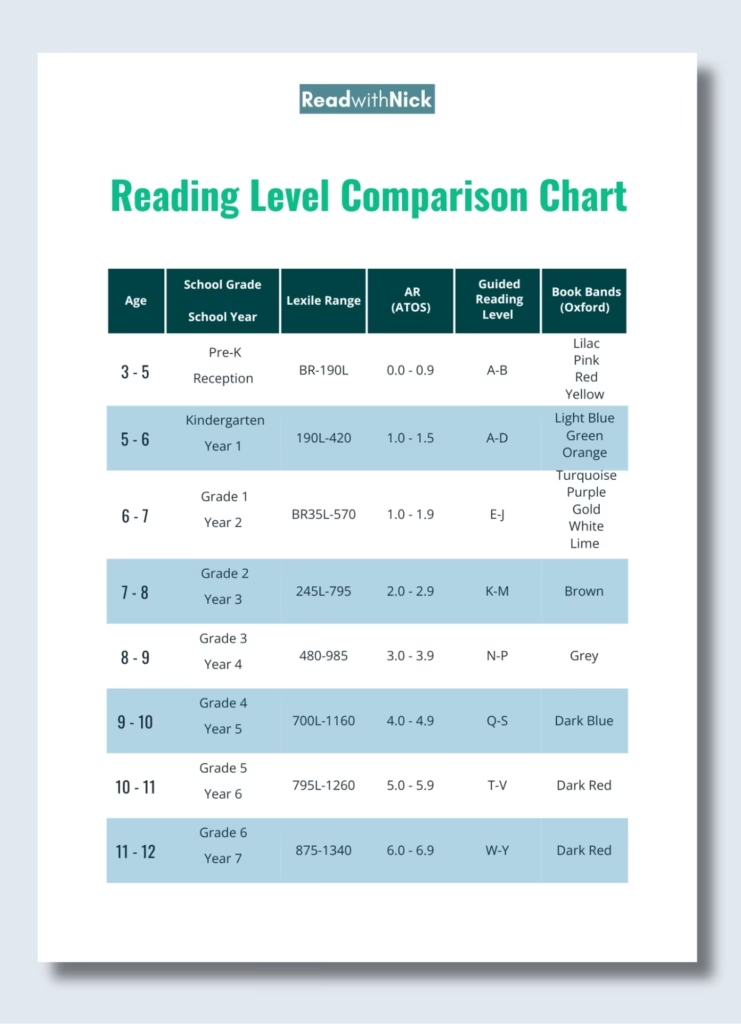
Leave a Reply